History can be strange and fascinating sometimes. Especially when political intrigue, jealousy, and revenge are involved. But what would a castle be without all that? Château de Chenonceau is perhaps the most beautiful castles in France. But without its unique history, it would probably be just another castle in the Loire Valley.
The story of Chenonceau is pretty much the story of the strong and powerful women who built it, restored it, loved it, fought over it. Not surprisingly the beautiful Château de Chenonceau was nicknamed Le Château des Femmes (the Women’s Castle).
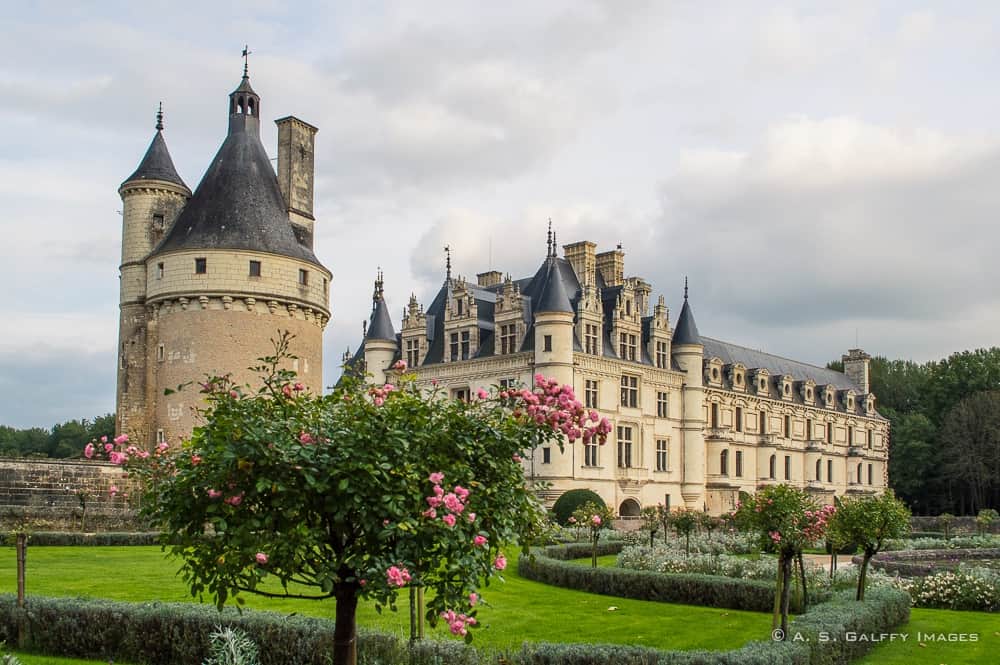
The Strong Women Behind the Château de Chenonceau
Katherine Bohier – From a Family Home to a Royal Residence
The first woman to be involved in the construction of the Château de Chenonceau was Katherine Bohier. Her husband, a tax collector for King Francis I, began the construction in 1515 but died before finishing it.
Katherine and her son finished the castle in 1535. Unfortunately, she had to give it to the King in payment of her huge debts. Chenonceau became now a royal palace. But men were not destined to control the castle for too long. King Frances I died shortly after acquiring Château de Chenonceau, so the castle passed on to his son Henry II.
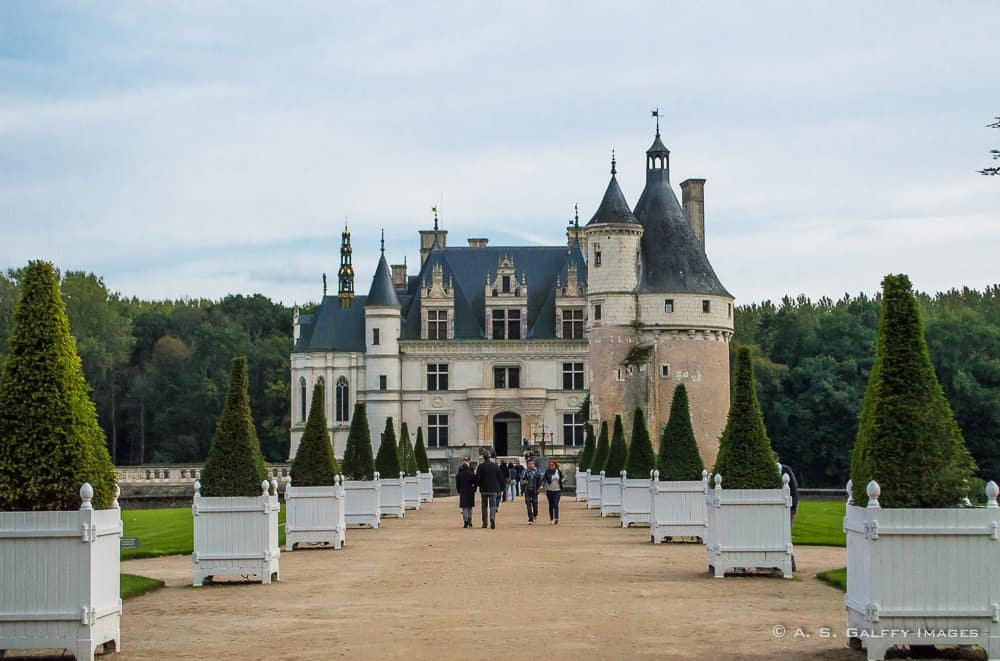
[2] Diane de Poitier, No Ordinary Mistress
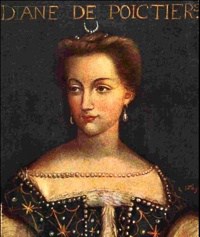
The glory of Chenonceau was built on a love triangle and the rivalry that derived from it. Henry II had two important women in his life: his wife, Catherine de Medici, and his mistress, Diane de Poitier. But to understand Henry’s attachment and loyalty to his mistress, one needs to know the story of Diane de Poitier.
Diane de Poitier was not an ordinary mistress. She was an incredible woman for her time. She was not only very beautiful but also well educated, intelligent and politically astute.
At the age of 15 Diane married a man who was 39 years her senior. Her husband, who was the grandson of King Charles VII, served as a courtier of King Francis I. As a result, Diane became lady-in-waiting to the queen, Claude of France. But soon the queen died and Diane became the children’s governess.
When Henry and his brother went to Spain as hostages, Diane was the one who accompanied them to the border. Since their mother was dead, she tried to give the children comfort and encouragement. That made a powerful impression on the young Henry. For him Diane became the embodiment of the ideal woman.
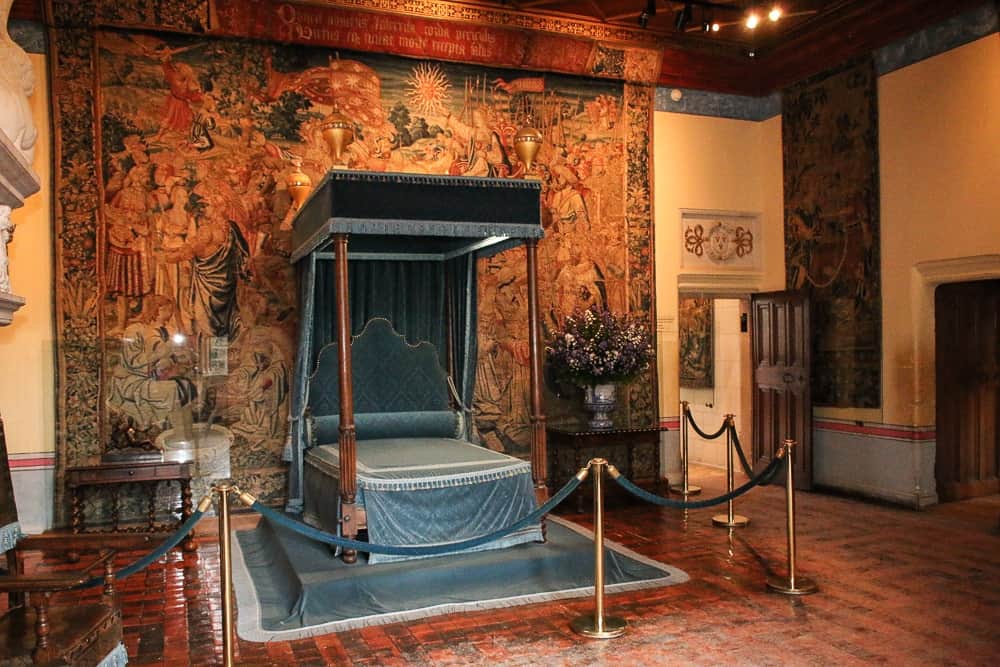
When Henry returned from captivity he and Diane became very close. But what started as an innocent mother-son relationship, soon turned into a very powerful love affair that lasted till Henry’s death. Henry II later married Catherine de Medici, but Diane always remained the one who had his heart. He showered her with gifts, trusted her judgement and considered her his most dependable ally in the Court.

When King Henry II ascended to the throne, Catherine expected that she will take control over the Château de Chenonceau. But to her surprise, the king gave the castle to Dianne de Poitier, his mistress.
The château became Diane’s passion and dream. Her goal was to transform it into a vision of elegance. She created a series of beautiful gardens and built the charming arched bridge that links the chateau to the opposite bank of the river.
[3] Catherine de Medici, a Vengeful Queen
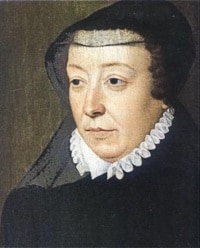
Henry’s decision to give his mistress the Château de Chenonceau enraged Catherine. Her hate toward the much older but beautiful Diane doubled. Unfortunately for Diane, her position depended entirely on the king’s welfare. Therefore, when Henry II became critically wounded in an accident, she could no longer go to the Court.
In the days that followed the accident the king called out repeatedly for his mistress. But Diane never found out about it. Neither could she get close to the royal chamber. She couldn’t even attend the king’s funeral.
Soon after Henry’s death, Catherine forced Diane to exchange Chenonceau for the much smaller Château de Chaumont. After taking possession of Chenonceau, Catherine embarked on a campaign of renovation which included the removal of all Diane’s influences. She made Chenonceau her favorite residence and tried to put her own mark on it.
Catherine landscaped of the gardens and completed the construction of the arched bridge started by her predecessor. She also built a splendid ballroom that was first used for the inauguration of her son’s coronation, King Henry III.
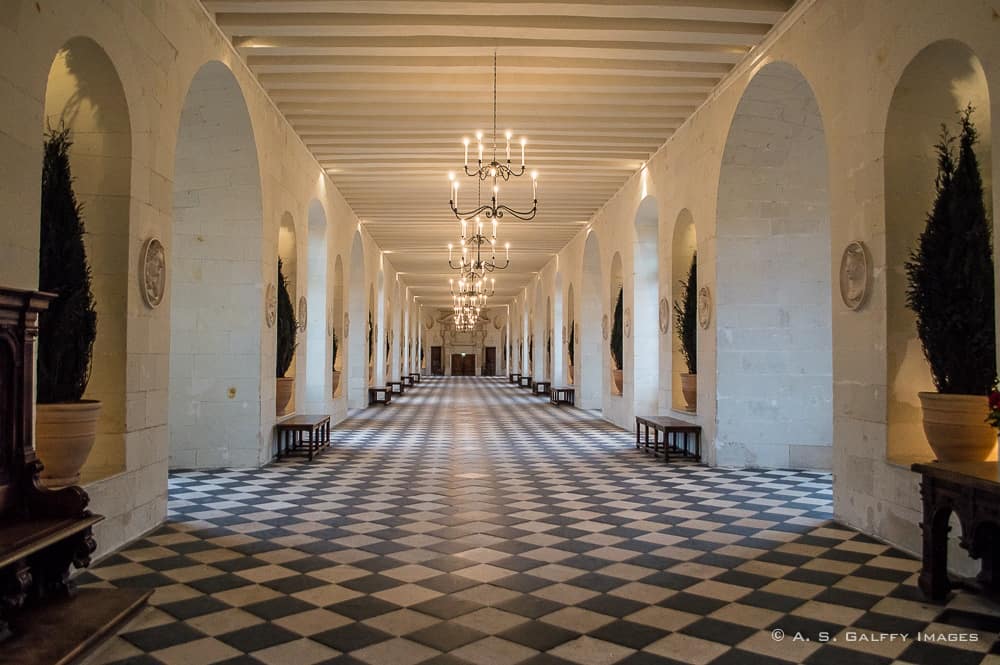
[4] Louise de Lorraine, a Widow Stuck in Grief
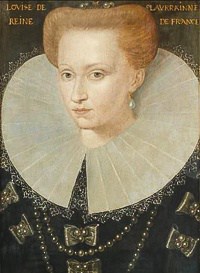
When Henri III (Catherin’s son) was assassinated, the Château de Chenonceau passed to his widow, Louise de Lorraine.
But the devastated Louise didn’t care to make any improvements to the castle. Instead, she entered into a life of mourning, painting her bedchamber black and roaming the halls in dressed in white cloths – the color of royal mourning. After Louise de Lorraine’s death in 1601 the Chateau de Chenonceau lost its royal residence status, falling into total decay for over a century.
[5] Louise Dupin, a Clever Defender
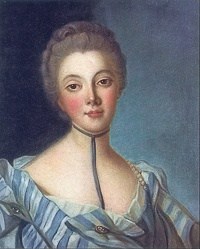
The next woman who left her imprint on Chenonceau was Louise Dupin whose husband, Claude Dupin, acquired the château from the Duke of Bourbon in 1777.
She took a special interest in breathing life back into the castle and restoring it to its old time splendor. A woman of fine taste and great influence, Louise Dupin hosted many parties at the château inviting famous thinkers of the time, like Voltaire and Rousseau.
When the French Revolution threaten to destroy her beloved Chenonceau, Madame Dupin quickly hid the castle archives. She covered the chapel with wood in order to conceal it. The clever Dupin convinced the lawless crowds to spare the château bridge, claiming it was the only means across the river for many miles.
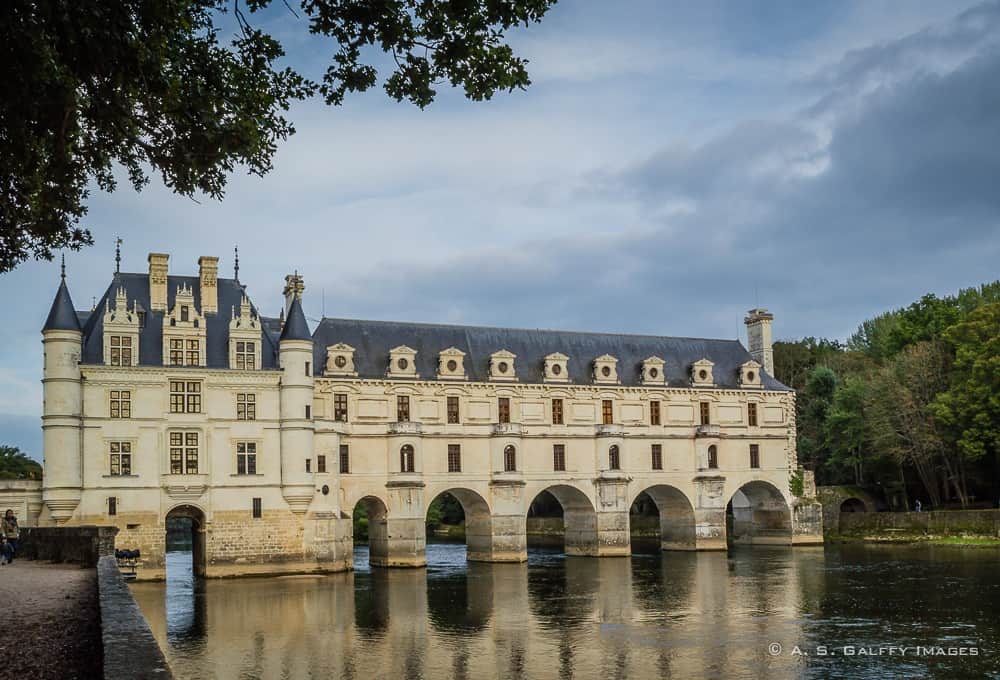
[6] Marguerite Pelouze, a Sad End
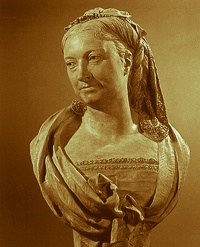
The daughter of a rich French entrepreneur, Madame Pelouze was the sixth and the last woman to leave a mark on the Château de Chenonceau. She began a restoration work that lasted for ten years. Her goal was to restore the castle to its original splendor in the 16th century, under Diane de Poitiers.
She removed many of the changes made by Catherine de Medici and also planted two rows of trees along the drive leading to the château.
She organized lavish parties at the château, entertaining famous guests like President Jules Grévy, and pianist Claude Debussy. But despite her great fortune, Marguerite Pelouze’s extravagant lifestyle resulted in the accumulation of a lot of debt, causing her to loose Chenonceau in 1888.

Chenonceau in the Modern Era
In 1913 the Château de Chenonceau was finally bought by its present owners – the Meniers. A prominent family of chocolatiers, the Meniers continued to restore and maintain the castle.
When World War I started, Chenonceau became a military hospital for the wounded. During World War II, the gallery of the château played an important part in French Resistance, as the border between the occupied part of France was on the banks of the River Cher.
As a result, the main entry of the castle was under the Germans and the exit at the other side of the gallery was under the French. Many people used this possibility to flee the occupied France.
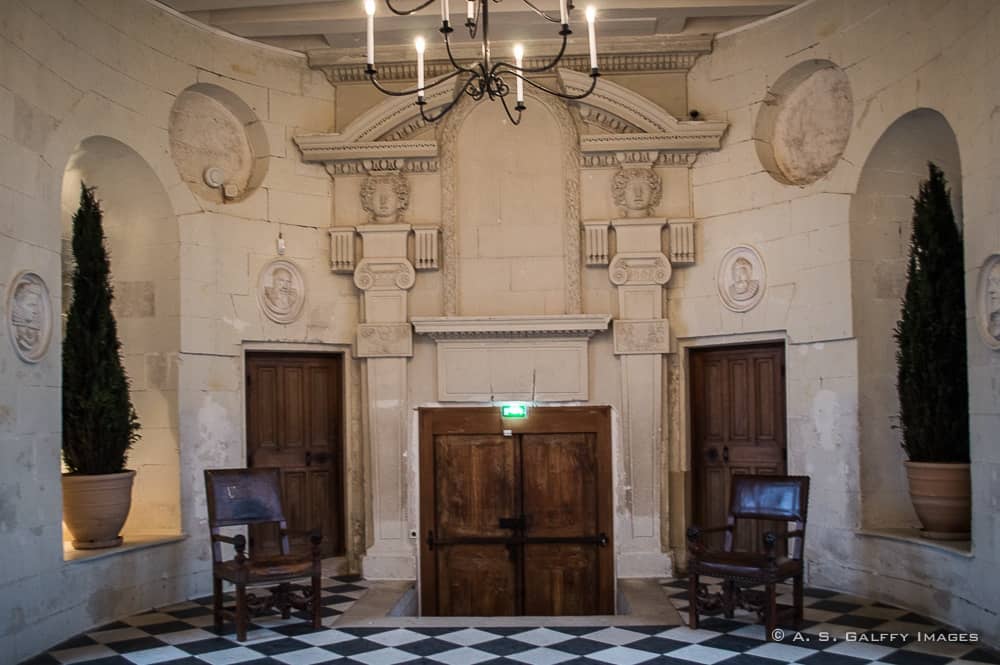
Unlike the other chateaux in the Loire Valley, Château de Chenonceau stands up as a testament to the power of women.

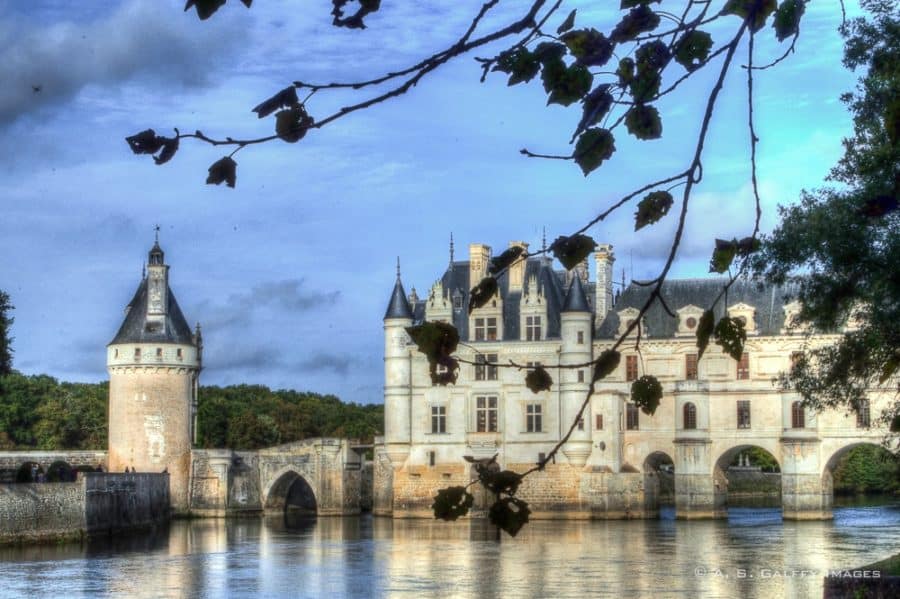
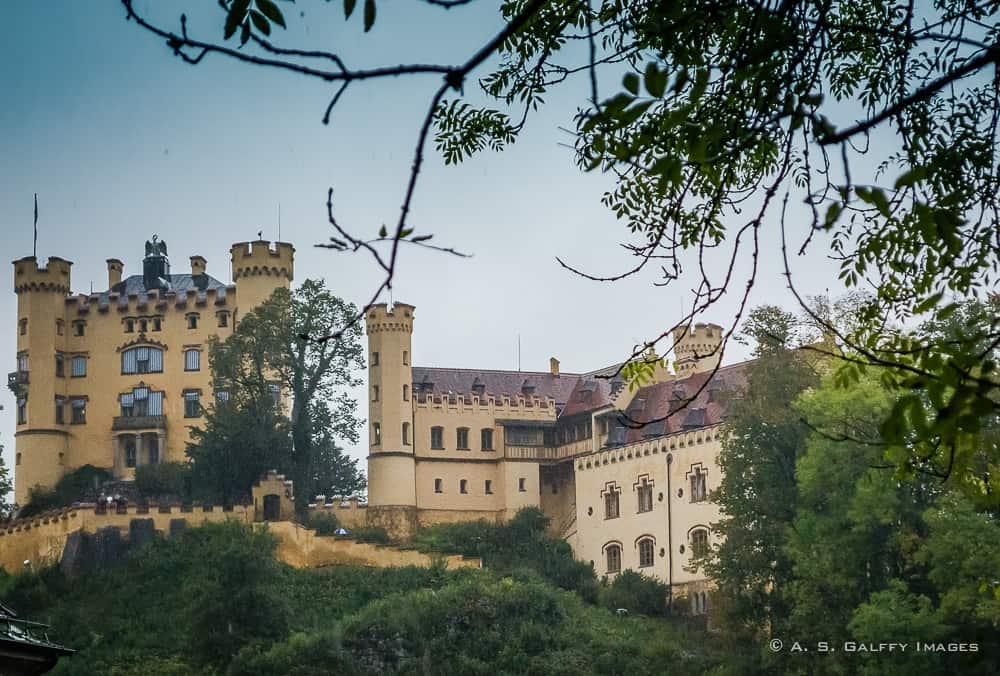 Visiting the Hohenschwangau Castle in Germany
Visiting the Hohenschwangau Castle in Germany



Lyn @thetravellinglindfields
Thank you. I have been to Chenonceau a couple of times and admired its architectural beauty but I knew nothing on its history. It must have been the source of some great stories during the WWII occupation.
Anda Galffy
I think stories of these castles give a lot of meaning to the visit.
Tanja (the Red phone box travels)
What an amazing castle! And such great ladies!
Sand In My Suitcase
What a lovely story! And here’s to women-power :-). We’re hoping to visit the Loire Valley this year – especially to see all the wonderful castles. We hear you have to be picky though, otherwise you can get “castle overload” :-). This one sounds like it should be on the “must see” list though.
Anda Galffy
If you never visited the Loire Valley, this is one of the castles that will surely inspire you, Janice. Besides, it’s a great place for photography.
Laz
Fascinating story! I am planning to go back and take another look at the place to see if it feels different knowing its history!
Anda Galffy
A one time visit in the Loire Valley is not enough.
Melodie K
Enjoyed your telling of this fabulous and TRUE story! Would have liked to see Chenonceau in its heyday, under Diane de Poitier, and so appreciate the efforts of Mesdames Dupin and Pelouze, and now the Menier family. This is the fairytale château so many of us ~ including me ~ daydreamed about as children.
Anda Galffy
I hope you’ll get the see this beautiful castle, Melodie. Actually, you can ask Rosemarie K., our common friend about a tour in the Loire Valley. She lives there.